A well-designed and well-installed museum exhibit appears effortless, as if the objects on display were always meant to be viewed in that exact context. Despite this apparent ease, museum exhibitions require a tremendous amount of long-range planning. Christina Johnson and Kevin Jones, co-curators of High Style: Betsy Bloomingdale and the Haute Couture spent three years planning the exhibition. An important aspect of their planning was deciding how to best display the garments. As you’ve seen from the images we post on this blog, the FIDM Museum has an extensive collection of dress forms and mannequins. Christina and Kevin decided, however, that Betsy Bloomingdale’s haute couture garments would be best displayed on floating forms. Unlike mannequins or dress forms, floating forms do not extend beyond the boundaries of the garment. This allows you to focus entirely on the garment, without the distraction of legs, arms or facial characteristics.
As you might imagine, creating floating forms is a complicated process. All of the floating forms used to display the garments in High Style were created by Carolyn Jamerson, FIDM Museum Study Collection Manager. Carolyn worked on the floating forms for almost a year! She recently gave a presentation about the process and we’re going to feature a brief overview today.
The first step is to determine the dimensions of the actual garment you want to display. If possible, look at pictures of the garment on a body, so you can determine how it is meant to fit. Be aware of any potentially tricky areas, such as a halter neckline or spaghetti straps. Carolyn worked from photos of Betsy Bloomingdale wearing the various garments and fashion magazine editorials featuring similar garments.
Carolyn used clear plastic torsos as the foundation for each floating form. The forms were measured and cut to the contours of the actual garment, i.e. the mount for a one-shoulder dress would have the “extra” shoulder removed. This step required sawing, which was completed in our workshop. The torso was then covered with a layer of thin quilter’s batting, as seen above.
The form is then covered with a layer of 100% cotton medical stockinette. Stockinette is tubular (like a sock but open at both ends) and is pulled over the form. The stockinette serves as a foundation on which to stitch any additional padding. Carolyn customized the shape of every form to match the requirements of each respective garment by hand-stitching padding to the stockinette. In the image below, you can see how the padding has subtly altered the shape of the form.
All additional padding is hand-stitched to the stockinette layer using a curved needle. Carolyn used purchased shoulder pads bought in the nearby garment district. She also hand-cut shapes from quilter’s batting.
If needed to support or shape the garment, layers of petticoats can also be stitched to the stockinette. Once all additional padding and petticoats have been attached, the form is covered with an additional layer of stockinette. This final layer helps protect the garment.
Arms are created by drilling holes at the underarm. Wire is then threaded through the holes and covered with layers of batting to create a realistic shape. The arm is also covered with a final layer of stockinette.
Areas that might be spotted by exhibition viewers, such as the “hands” above, are covered with fabric to match the garment in question. This creates a visual continuity so that the garment and mount seem to be one seamless object.
A grouping of finished floating forms is seen below. The red trimmed form in the center was made for this Gianfranco Ferre for Christian Dior evening gown.
Creating the floating forms is very labor and time intensive. The custom forms, however, display each garment without any visual distraction. They also fully support each garment, helping to minimize damage through stress on seams or fragile textiles. However, the process of measuring and fitting each garment for the form can be somewhat hard on particularly fragile garments. For this reason, you should carefully evaluate the garments you would like to display on floating forms. As Betsy Bloomingdale’s garments were all in good condition, we were able to use floating forms to excellent advantage.
Many thanks to Carolyn for her hard work on this project! To read more about Carolyn’s recent presentation on the making of floating forms, check out this post on WornThrough, written by Heather Vaughan.
For an additional perspective on installing an exhibition, visit this blog post from the Chicago History Museum. It features a slideshow on the installation of their recent exhibit Chic Chicago.

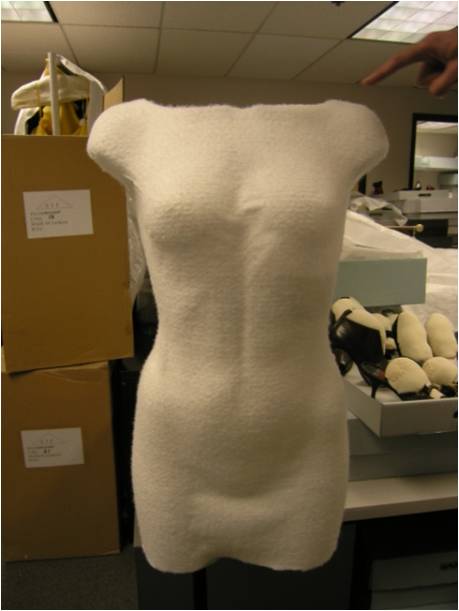
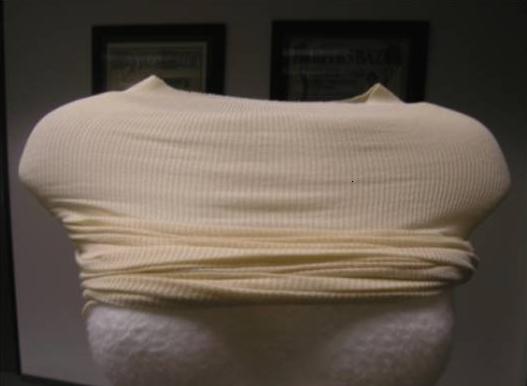
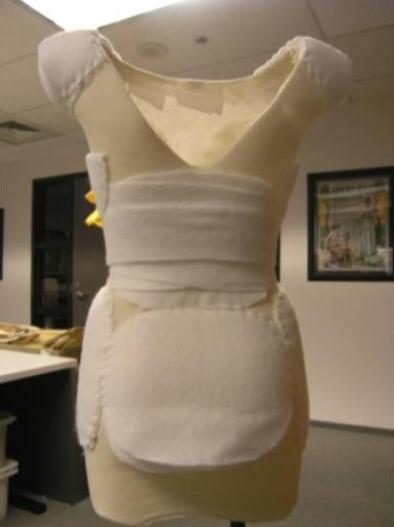
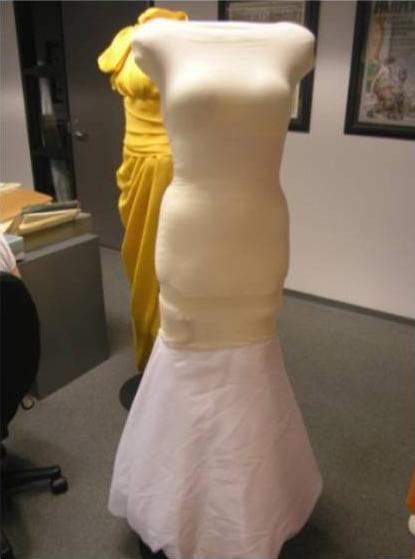
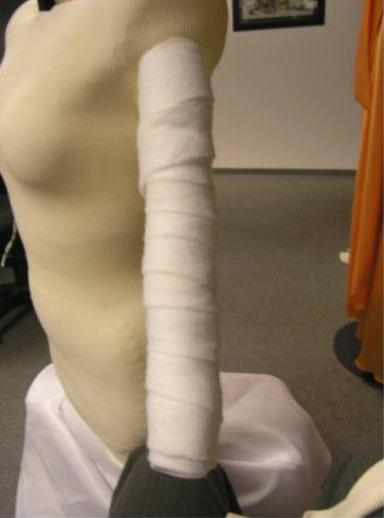


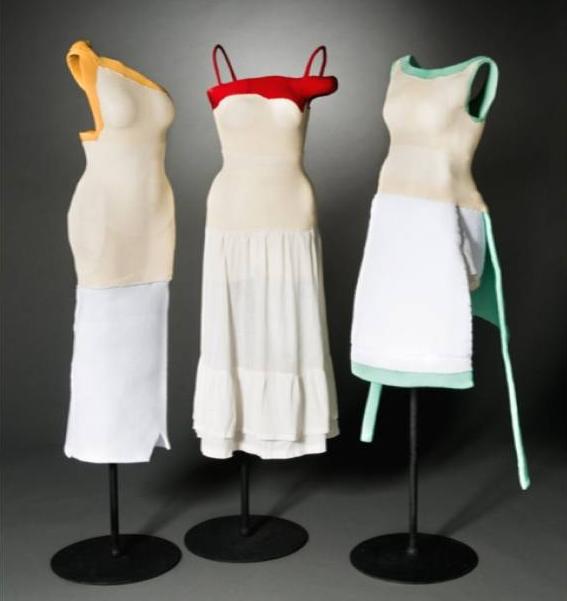

I know it’s been many years since this post was put up but I just wanted to thank you so much for the information and pictures you provided.
I’m sorry I forgot to ask in my original post, what kind of medical ribbing did you use that can stretch wide enough to fit around a torso?
Hi Becky,
Glad you enjoyed this post! The information included is pretty timeless and I hope it will be helpful to you. The medical stockinette we use comes in a roll about 2-3 inches wide. There are different brands on the market, all about the same width. It has incredible stretch, so if you pull, the narrow tube can be pulled over a mannequin torso. Let me know if you have additional questions.
Glad this was resurrected. Need a source for clear male body forms. Lots of pics on interweb but not many sources. What kind of plastic are the body forms made from? Hopefully not styrene. I have had stockinette up to 6″ wide. Any info is appreciated. Thanks Phil, Preparator Museum of New Mexico retired.
Hi Phil,
The FIDM Museum is located just a few blocks from the LA garment district so we’re often able to purchase mannequins locally. We tend to display more women’s clothing than men’s, so we don’t have one source we use for male forms. If you’d like, send me an email and I can offer some sources, though I’m not sure if they ship: rharris@fidmmuseum.org.